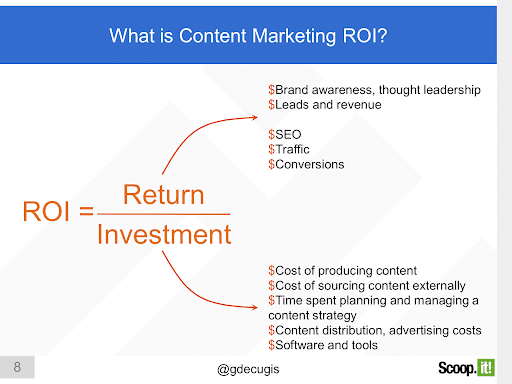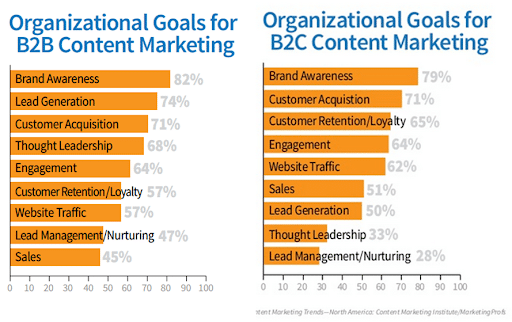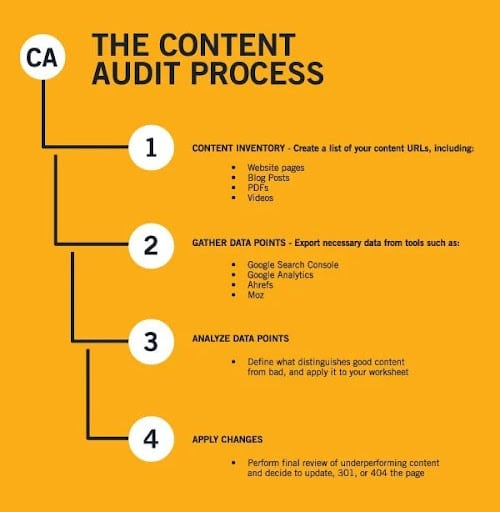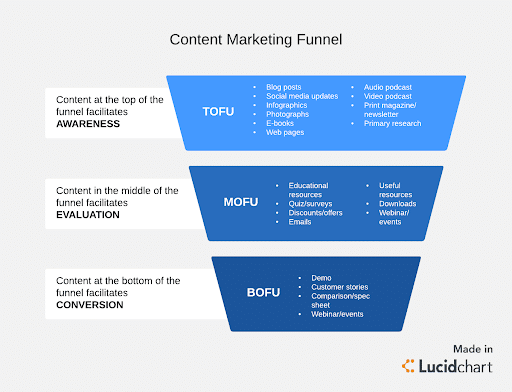Home / Blog / Fundamentals / What is a Content Map? How to Create One?
What is a Content Map? How to Create One?

Aug 29, 2023
Share to
In today’s hyper-competitive era, understanding what your target audience is searching for and aligning your content with their intent is crucial to succeed in the content marketing game.
But it is easier said than done!
Even if you have the best & most talented writers, without a clear plan, your team is likely to produce content that is disconnected from your overall content marketing goals.
This lack of cohesion cannot only confuse search engines but your content may also fail to resonate with your target audience.
If you’re a content marketer or SEO professional struggling to overcome this challenge, a content map is what you need!
But what is a content map exactly?
In this post, we will explore the subject of content mapping in detail, discussing its benefits and the step-by-step process you need to follow to create one for yourself.

What is a content map?
A content map is a strategic blueprint that aligns your content with the stages of the buyer’s journey. It streamlines creation, ensures clarity, and delivers the right content to the right audience at the perfect moment. In essence, it’s your guide to captivating and valuable content delivery.
Why Should You Create a Content Map?
There are several reasons why having a content map is essential for your online presence and how it can help you reach your goals effectively:
It helps keep direction and focus
A content map acts as your North Star. Without it, you might find yourself veering off-topic or producing content that doesn’t align with your goals. It’s like having a compass in the vast landscape of content creation, ensuring you don’t get lost in the wilderness of ideas.
It helps you to understand your customer journey
To create content that truly resonates with your audience, you need to understand their journey – from the first touchpoint to becoming a loyal customer.
A content map helps you do exactly that. It enables you to visualize this journey clearly as crystal and create content that caters to your customer’s needs at every stage.
A customer journey generally involves 4 stages:
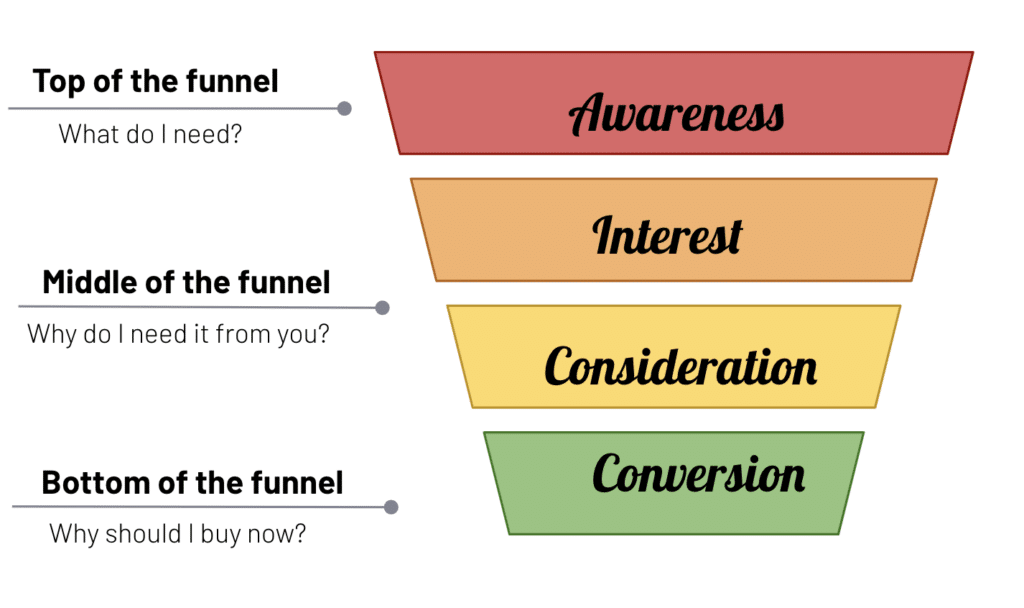
A well-crafted content map allows you to tailor your content to address pain points, questions, and concerns at every stage. Thanks to this, you can establish a deeper connection with your target customers, build trust, and convert them into paying customers.
It improves efficiencies
Think of the hours spent brainstorming or the frustration of hitting a creative block. With a content map, you have a clear outline, reducing the paralysis of choice and helping you jump straight into creation mode.
It helps with measurement and analysis
With a structured approach, you can set clear KPIs for each content piece. This makes it easier to gauge what’s working and what’s not, allowing for data-driven adjustments rather than guesswork. We’ve written a detailed guide on using journey mapping to set KPIs for content here.
It helps to identify gaps in content coverage
Have you ever felt like your content strategy is missing something, but you just can’t seem to be able to put your finger on it?
As mentioned earlier, a content map allows you to visualize your content plan to identify gaps in your overall content coverage easily.
These gaps could be certain topic clusters that you haven’t covered yet, or they could be specific articles where you could have provided more in-depth information.
Identifying and understanding such content gaps can allow you to fill them strategically to keep your customers engaged and satisfied. This can boost your SEO performance by helping your website achieve topical authority and rank higher in Google SERPs.
It helps avoid redundancies
In the inverse to the point above, a content map acts as an inventory, ensuring you’re always bringing fresh insights to the table and not rehashing old ones.
Maximize Content Marketing ROI
Budgets aren’t infinite. Knowing what content to produce, when, and for whom, allows you to allocate resources wisely, ensuring maximum ROI.
Unified Team Vision
Miscommunication can derail even the best content strategies. A content map serves as a shared reference point, ensuring everyone from writers to designers is aligned in their efforts.
In essence, a content map is more than just an organizational tool. It’s a strategic powerhouse that can elevate every facet of your content marketing efforts.
How to Create a Content Map: Step-by-Step Process
Below, we’ve shared the entire process of creating a content map, from start to finish, so you can elevate your content marketing game and come out on top.
Step #1 – Create your Buyer Personas
Every successful content map begins with a clear understanding of your audience. To create content that resonates with your readers, you need to know who they are, what they like, and what challenges they face.
This is where buyer personas enter the scene. A buyer persona is a fictional representation of your ideal customer.
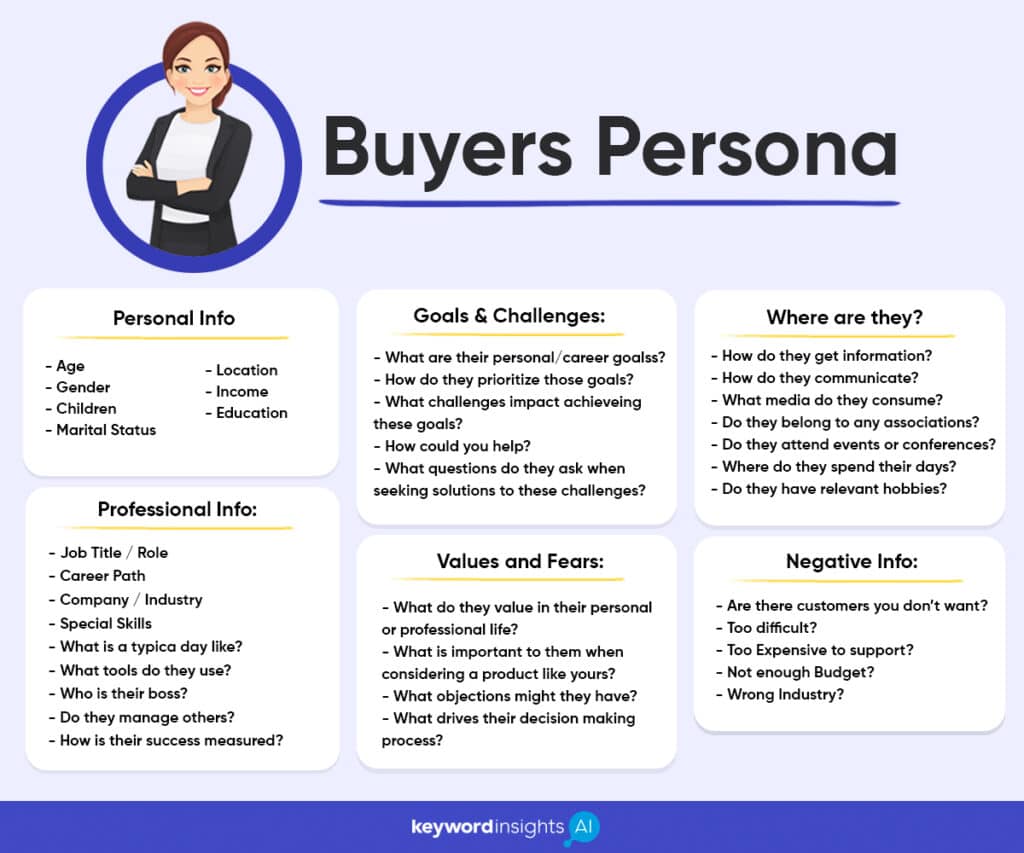
To create a content map, you’ll have to invest some time into research and gather insights about your ideal customers.
This process usually includes asking questions such as:
- What are their demographics?
- What are their interests and preferences?
- What are their pain points and goals?
- And so on…
Remember, having well-defined buyer personas is essential to tailor your content to suit their needs, pain points, and preferences.
Step #2 – Define your Content Marketing Goals
Before creating any piece of content, you need to figure out what its end goal is.
You need to define your content marketing goals before putting effort into content creation.
The goals can vary depending on the industry and the business:
Ask yourself a simple question – What do you want to achieve with your content?
Clear goals will give your content map a sense of purpose and direction. It will help you focus on creating content that aligns with your objectives and delivers tangible results.
Remember, a content map is not just about producing content for the sake of it; it’s about achieving meaningful outcomes that bring you closer to your end goal.
Bear in mind, the goal of every piece of content won’t always be to convert as we explain in this post.
Step #3 – Document the Customer Journey
In this step of the content mapping process, you need to document the customer journey and understand the different stages your audience goes through.
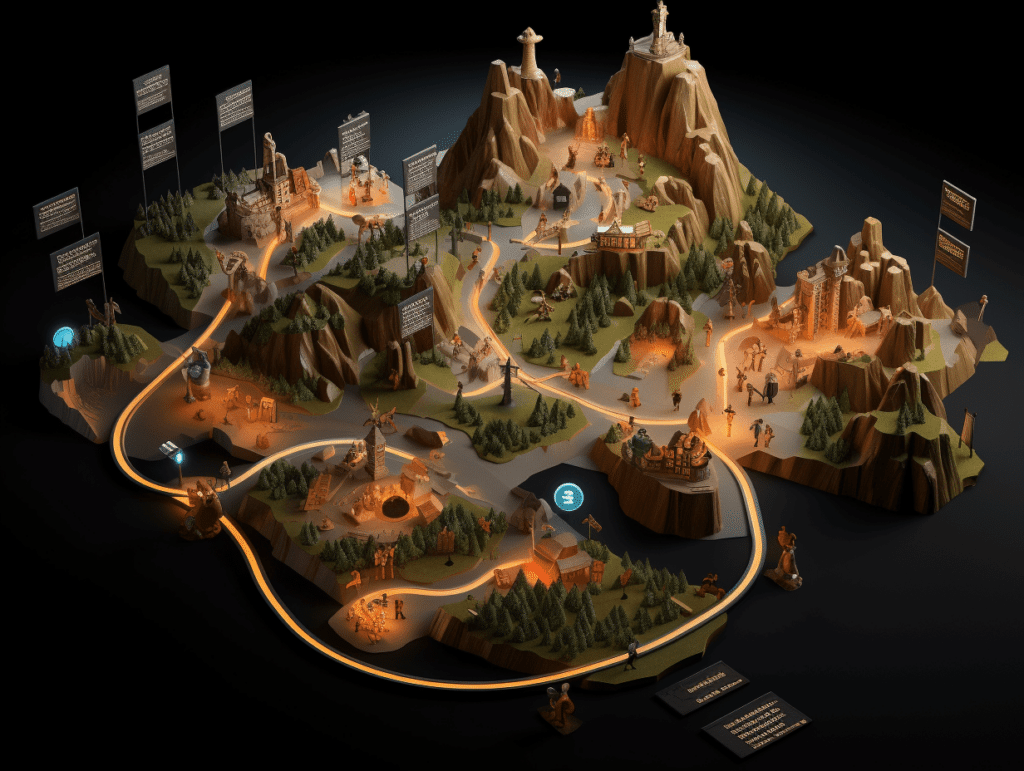
This includes the first moment they become aware of your brand to the final decision-making phase. And your content map should be able to cater to your customers at every turn.
So, start by identifying the key touchpoints your customers encounter during their journey and try to understand:
- What questions do they have at each stage?
- What content can you provide to address their concerns and guide them forward?
Asking such questions will help document your customer journey and create content that complements each stage.
Step #4 – Perform a Content Audit (if you already have content)
Before you begin drawing your content map, assessing what you already have in your content arsenal is essential.
In other words, you must perform a content audit to evaluate all your existing content pieces.
During the audit process, pay attention to the performance of each piece. Furthermore, you must identify which content pieces get the most attention, engagement, and shares.
This will help you understand what content resonates with your audience and what might need improvement.
In addition, it’s highly suggested to watch for outdated or irrelevant content that might not fit your current content strategy. You can decide whether to update, repurpose, or retire such content to make room for fresh and valuable ideas in your content map. This is something we can manage for you with our content strategy and content marketing consultancy if required.
Step #5 Conduct Keyword Research
Once you’ve got a solid grasp on how your site’s existing content is performing (if you have content), it’s time to double down and find more keywords around what’s working. Say your ToFu (Top of Funnel) or MoFu (Middle of Funnel) content is racking up impressions, clicks, and shares. Brilliant! Now, dig up more keywords in those categories and strategically link them to your BoFu (Bottom of Funnel) content.
But your work isn’t done yet. While you’re in the keyword trenches, it’s also time for some spring cleaning. Evaluate the performance of your existing keywords. Are some underperforming or, worse, doing absolutely nothing for you? If so, it’s time to cut them loose. Replace them with more promising options that align with your winning content.
And here’s where you can really get ahead: Don’t just focus on the keywords everyone in your industry is fighting over. Do some reconnaissance to find those untapped, industry-specific keywords that your competitors are neglecting. I’ve written about finding “Tangental Content” ideas before in Search Engine Journal, so I’d recommend reading that article here. This is your chance to swoop in and capture some low-hanging opportunities they’re missing out on.
So, in a nutshell, it’s all about refining and optimizing. Use your performance data to do more of what’s working, ditch what’s not, and seize opportunities your competitors haven’t even noticed yet.
Of course, if you don’t yet have any existing content, you’ll just carry out your keyword research as normal. How to do keyword research is out of the scope of this article, but feel free to Google it. There are plenty of great guides on this.
Step #6 – Map Existing Content (if you have it) and New Content Ideas to Each Stage of the Sales Funnel
As explained earlier, the sales funnel consists of four main stages: awareness, interest, consideration, and decision-making.
For the awareness stage, focus on creating content that introduces your brand, products, or services to your audience. This content should be informative and engaging, attracting potential customers to explore further.
The consideration and interest stages require content that dives deeper into the benefits and features of your offerings. Consider creating case studies, comparison guides, and expert reviews for this stage to establish trust with your ideal customers.
Finally, in the decision-making stage, provide content that convinces your audience to take action. This usually takes free trials, testimonials, and limited-time offers to push your ideal customers toward purchasing.
Step #7 – Identify Any Content Gaps You May Have
As you’re mapping out your content and keywords, you might stumble upon some glaring gaps.
So, how do you spot these gaps across the sales funnel? Easy. Slip into your audience’s shoes for a moment. Jot down the questions, concerns, or challenges they might be wrestling with at each stage of their journey. Then, think about what kind of content could be the nudge they need to take that final leap—whether it’s making a purchase, signing up, or any other conversion goal. We’ve written a detailed guide on content gap analysis here.
This isn’t just about filling space; it’s about cementing your role as an expert who genuinely gets what the audience is going through.
So, in essence, identifying and filling content gaps isn’t just a patch-up job. It’s a strategic move that amplifies your expertise, shows you’re in tune with your audience’s needs, and ensures your entire content ecosystem is firing on all cylinders.
Step #9 – Create a Content Promotion & Distribution Strategy
Your content creation journey doesn’t end with writing captivating blog posts or creating eye-catching videos.
You need a well-crafted content promotion and distribution strategy to make your content stand out.
Content promotion & distribution usually involves identifying the channels where your target audience hangs out and creating a plan about how to promote your content on these channels.
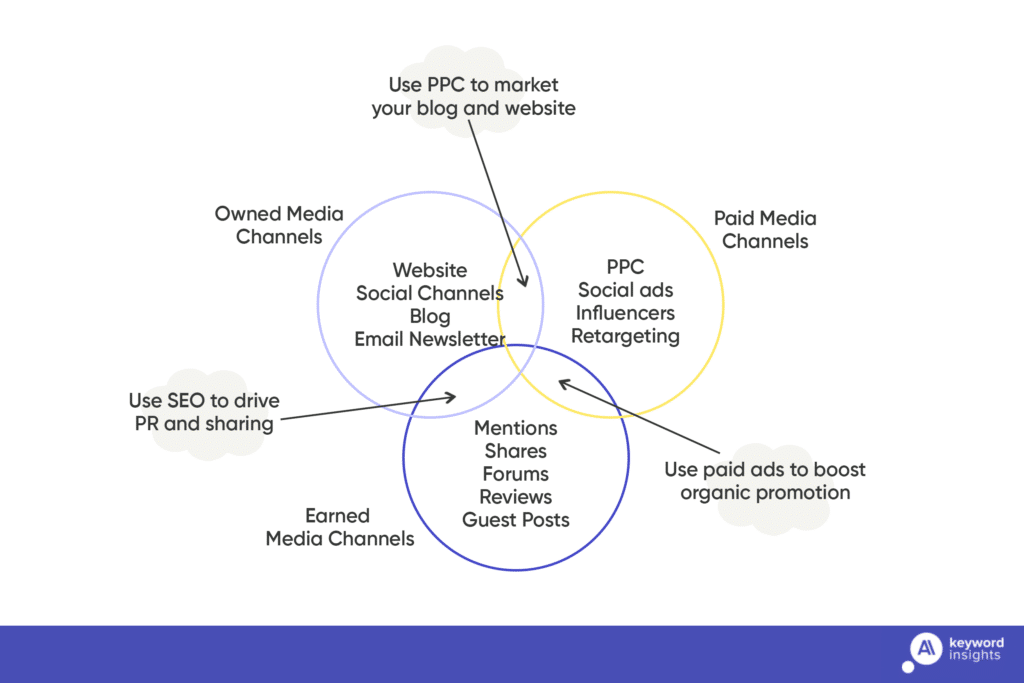
Remember, engaging with your audience when promoting your content is extremely important.
This can include responding to their comments, asking questions, or encouraging discussions to establish a sense of community surrounding your content.
Step #10 – Create an Editorial Calendar
Think of an editorial calendar as the backbone of your content map. It’s not just a fancy to-do list; it’s your tactical playbook that keeps you organized, helps you plan like a pro, and ensures you’re consistently churning out top-notch content.
But before you start filling in dates and topics willy-nilly, you’ve got some homework to do. An effective editorial calendar isn’t born from chaos; it’s sculpted from clear goals and objectives. What does that mean? Well, you need to nail down a few key things:
- Volume: Decide how many pieces of content you aim to publish each month. This isn’t just about quantity; it’s about what’s realistically manageable while maintaining quality.
- Themes & Topics: Identify the specific themes or topics that align with your content map and audience needs. This ensures you’re not just creating content for content’s sake but are actually adding value to your audience.
- ROI Goals: What’s the endgame? Whether it’s boosting website traffic, increasing engagement, or driving sales, have a clear idea of your desired ROI. This will help you tailor your content to meet those objectives.
So, in a nutshell, an editorial calendar isn’t just a scheduling tool; it’s a strategic asset. It helps you align your day-to-day content creation with your broader goals, ensuring that every piece you publish is a step toward achieving what you set out to do.
We go through some great tools for creating content calendars/content maps a little later in this guide.
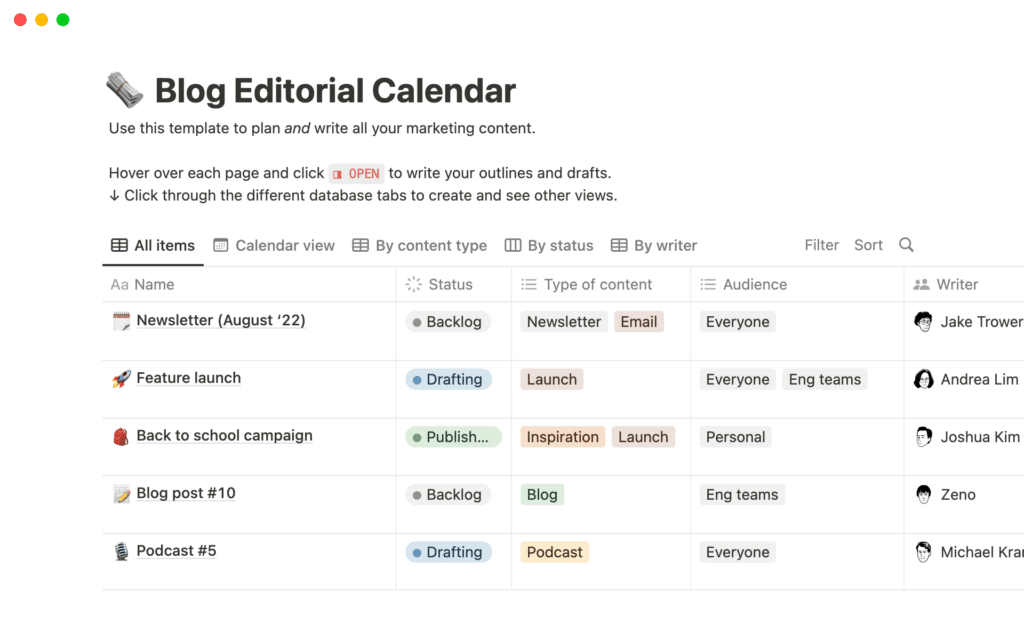
In addition to this, you also need to decide the frequency of your content updates. Will you publish daily, weekly, or monthly?
Remember, consistency is key to keeping your audience engaged and coming back for more, so stick to your schedule as closely as possible.
Step #11 – Set Deadlines and Monitor Progress
Deadlines are to your content map what a metronome is to a musician: they keep the rhythm and ensure everyone stays in sync. But let’s be real, setting deadlines isn’t just about slapping dates on a calendar; it’s about striking a balance between ambition and realism. You want to keep the team motivated and focused, but you also don’t want to set yourself up for a mad, stressful scramble.
If you’re scratching your head over how to set these deadlines, here’s a tip: break your grand content map into bite-sized milestones. Assign deadlines to each task, whether it’s wrapping up a blog post, crafting a killer infographic, or queuing up social media promotions. Specific deadlines act like mini accountability partners, ensuring your content train stays on its tracks.
But hey, we’re living in a digital age, so why not make technology your ally? Consider using project management or content mapping tools (we’ll dive deeper into this later). These digital wizards help you visualize your content schedule, track your progress, and even make on-the-fly adjustments without breaking a sweat.
So, in essence, deadlines aren’t just arbitrary dates; they’re the scaffolding that supports your content map. They keep you accountable, ensure you’re making steady progress, and help you hit those content goals without losing your sanity.
Step #12 – Continuously Evolve your Content Map
If you want to be the LeBron James of content, you can’t just sit and forget. You’ve got to be nimble, adapting to the ever-changing whims and needs of your audience.
So, every time you hit that ‘publish’ button, don’t just kick back and relax. Pay close attention to how your audience is interacting with your content. Are they leaving comments? Sharing it? Engaging in discussions? Take notes on all of this. It’s like mining for gold; you’re looking for clues on what really clicks with them and what they find invaluable.
Armed with these insights, you’re not just reacting; you’re evolving. Use this feedback to tweak your content map, experiment with new formats, or even venture into uncharted topics. It’s like having a cheat sheet for what your audience wants next.
But don’t just stop at customer feedback. Keep one eye on the industry pulse. Are there emerging trends or shifts in customer preferences you should be aware of? This isn’t just about staying current; it’s about anticipating where your audience is headed and meeting them there.
In a nutshell, staying on top of your content game isn’t a one-and-done deal. It’s a dynamic process that involves listening, adapting, and continually fine-tuning your strategy to keep it as relevant and impactful as possible.
Bonus: Best Content Mapping Tools to Use in 2023
Now that you’ve mastered the complete process of creating a content map let’s look at some of the best content mapping tools to aid you during this journey.
- Trello
Trello is a tried-and-true favourite among content creators for its simplicity and effectiveness. And it can help to keep your content tasks organized very neatly.
Trello uses boards, lists, and cards to help you manage your content projects effortlessly.
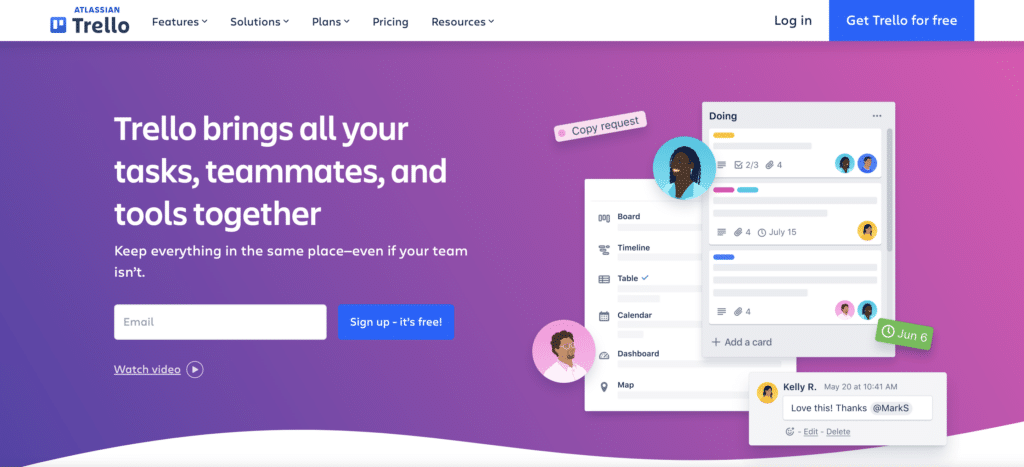
You can create a board for each content map and, within it, add lists for different stages of your content creation journey. The cards represent individual tasks or content pieces, which you can drag and drop between lists as you progress.
This visual approach lets you see your content map at a glance, making it easy to track progress, set deadlines, and collaborate with your content marketing team.
- Airtable
Airtable is a powerful and flexible content mapping tool that combines the ease of a spreadsheet with a database’s functionality, making it a perfect fit for organizing your content ideas, assets, and deadlines.
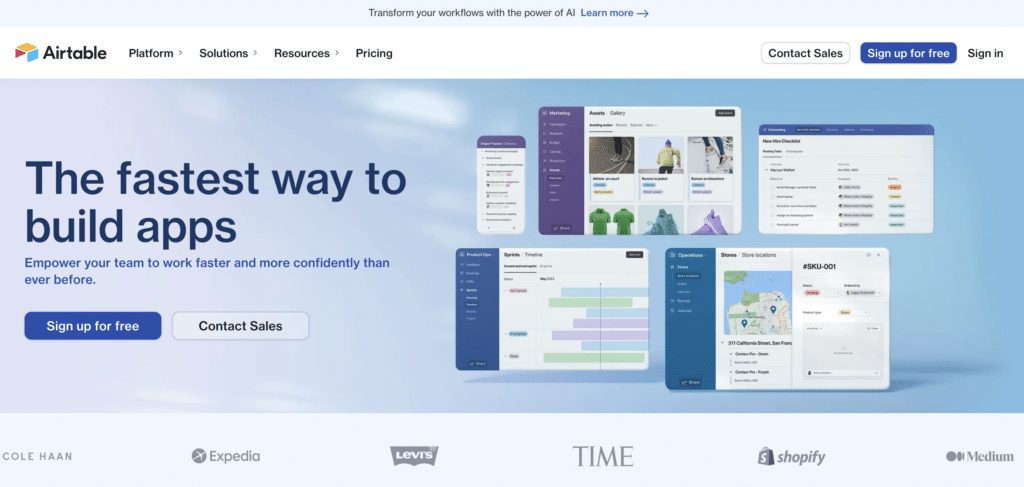
With Airtable, you can create custom content mapping templates that suit your unique needs. Whether planning blog posts, tracking social media campaigns, or organizing your editorial calendar, you can organize everything in Airtable.
Plus, the tool has useful collaboration features that enable your content team to work together in real time, make updates, and leave comments.
- Notion
Notion is an all-in-one, versatile platform that allows you to create content maps, wikis, notes, and more, all in one place.
With Notion, you can create content boards, outline your editorial calendar, and jot down content ideas seamlessly.
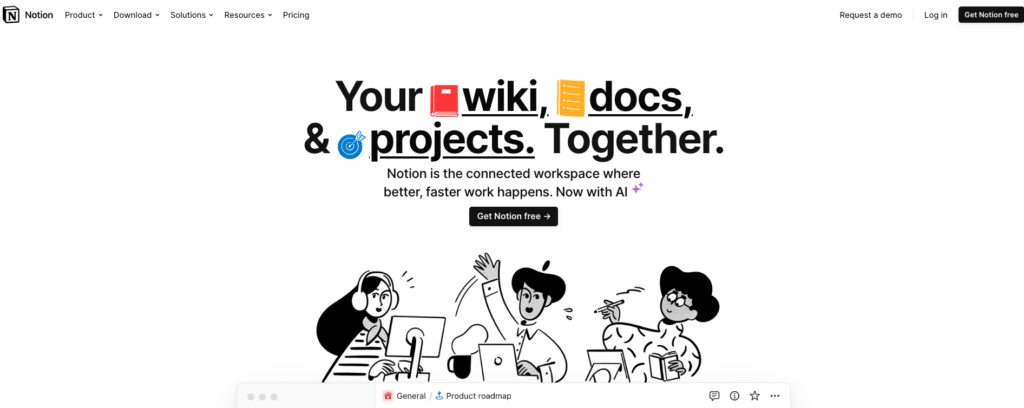
The best part? – Notion’s flexibility allows you to customize your content maps to match your unique workflow and preferences.
Like Airtable, Notion allows you to work collaboratively with your content team so everyone stays on the same page.
- Spreadsheets (Excel or Google Sheets)
Alright, let’s talk spreadsheets. Now, I know “spreadsheets” might not be the sexiest word in your vocabulary, but when it comes to crafting content calendars, tools like Google Sheets and Excel are absolute game-changers. Here’s why:
- Accessibility: Google Sheets lives in the cloud, which means you and your team can access it anytime, anywhere. Excel files can also be shared via cloud storage, making it easy for everyone to stay in the loop.
- Collaboration: Multiple people can work on the same sheet in real-time. That means no more back-and-forth emails or waiting for someone to update the doc. It’s teamwork made simple.
- Customization: Both Google Sheets and Excel offer a ton of flexibility. You can create tabs for different content types, use colour coding, or even set up conditional formatting to highlight deadlines. Make it as simple or as intricate as you like.
- Formulas & Functions: Need to calculate the ROI of a particular content piece or track key metrics over time? Spreadsheets have a range of formulas and functions that can automate these calculations for you.
- Version Control: Ever made a mistake and wished you could go back? Google Sheets has version history, and Excel has similar features. This means you can roll back to previous versions if needed.
- Integration: Both tools can integrate with other platforms. For example, Google Sheets can sync with Google Calendar, and Excel can integrate with Microsoft’s suite of productivity tools. This makes it easier to align your content calendar with other aspects of your business.
- Cost-Effective: Last but not least, these tools are free or come as part of a package you’re likely already using. That means you get all these features without shelling out extra bucks for specialized software.
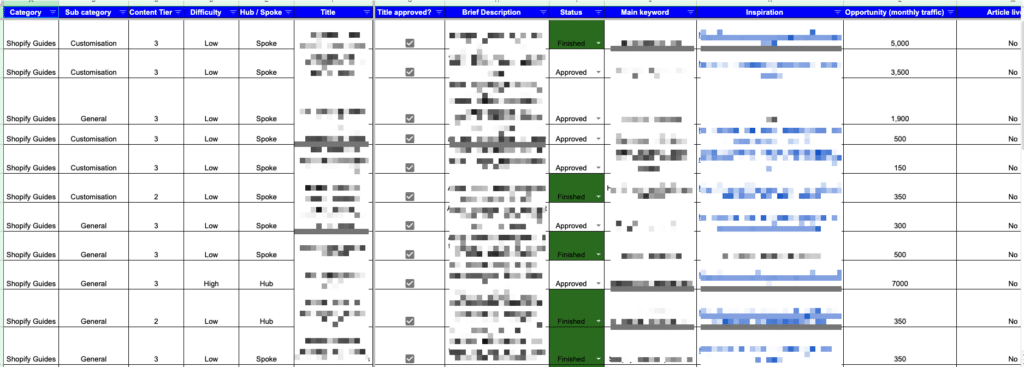
So, in a nutshell, spreadsheets like Google Sheets and Excel offer a blend of accessibility, customization, and functionality that makes them incredibly useful for managing your content calendar. They’re the Swiss Army knives of content planning, giving you a range of tools all in one accessible package.
Now It’s Your Turn to Create a Content Map!
Creating a content map can be a game-changer for your content marketing strategy. It can help guide your customers through the sales funnel and ensure you’re there to assist them at every stage.
In short, a content map is a strategic framework that can help guide your content creation, optimization, and distribution, ultimately producing extraordinary results!
That said, remember that a content map is not something that’s set in stone. So, keep an open mind, be adaptive to the changing demands of your customers, and continue refining your content strategy.
Other FAQs
Why is a content map important?
A Content Map is important because it provides a clear overview of your content strategy, ensuring coherence, consistency, and easy navigation for your audience.
How does a content map differ from a content calendar?
Content Map focuses on content organization and structure, while a content calendar deals with scheduling and publishing timelines.
What are the benefits of creating a content map?
Creating a content map helps streamline content development, improve SEO, increase user engagement, and enhance overall content quality.
What elements should a basic content map include?
A basic content map should include main content topics, subtopics, key points, and their relationships.
How to create a content map?
To create a content map, define your main topic, brainstorm related subtopics, and organize them hierarchically. Use tools like mind maps or spreadsheets for visualization.
How does a content map complement content creation?
A content map serves as a blueprint for content creators, guiding them on what to write about, ensuring content relevance, and reducing the risk of producing redundant materials. To help create the content, also try our AI content writer here: https://www.keywordinsights.ai/features/ai-writer/
Start your trial today for only $1
Sign up today for a $1 trial and enjoy access to 6000 keyword clustering credits, 3 Keyword discovery searches, 1 Content Brief and Pro versions of SERP Similarity, SERP Explorer.
Subscribe to our newsletter
Subscribe to get our latest news, offers, insights, and any updates.

